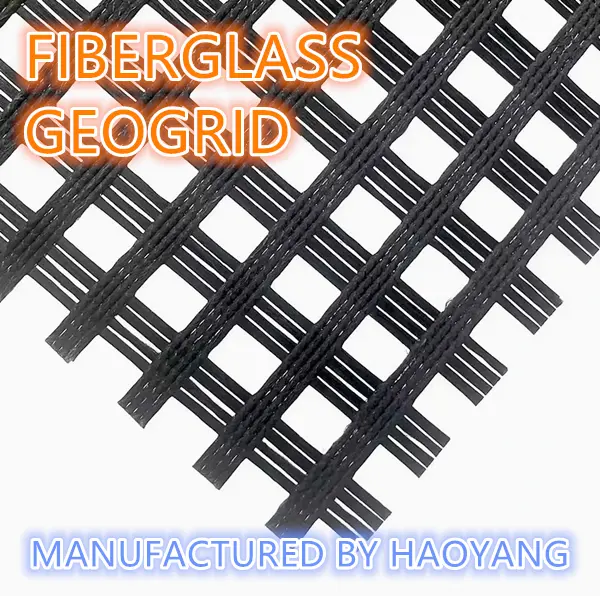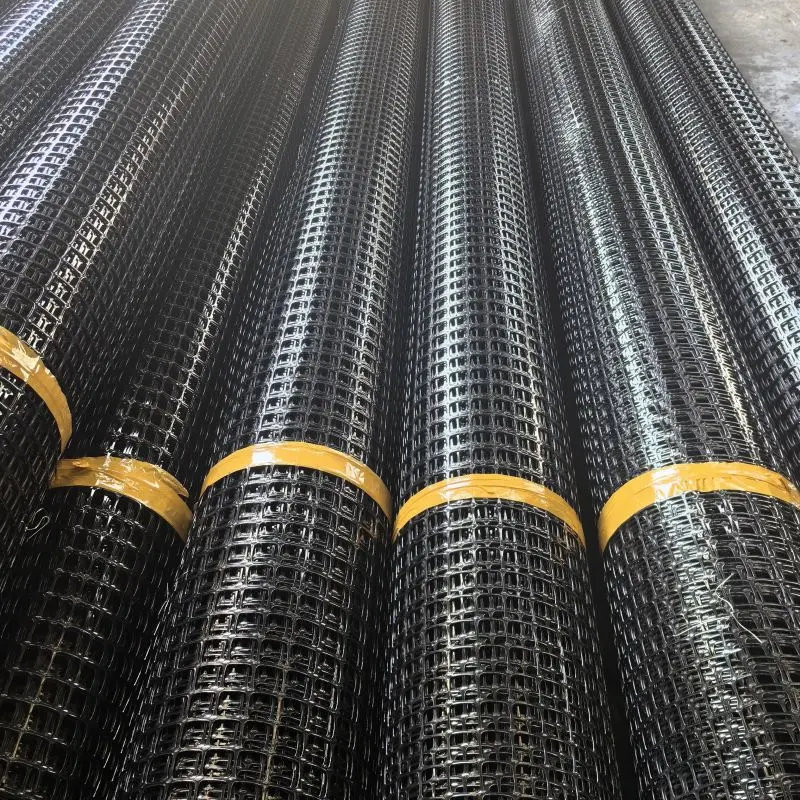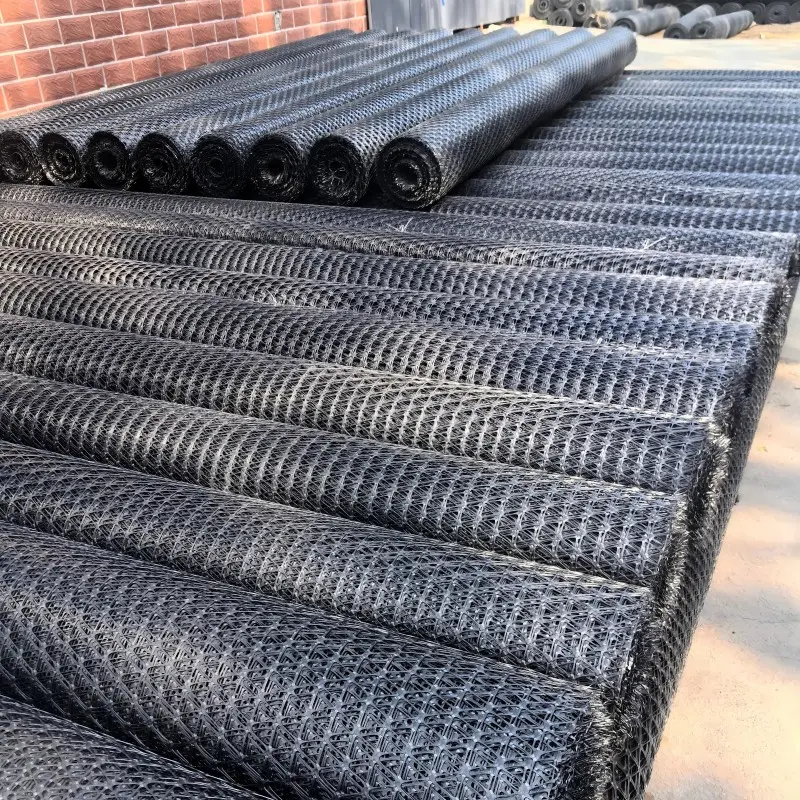What is a Geogrid?
A geogrid is a geosynthetic material used to reinforce soils and similar materials. Geogrids are commonly used in civil engineering projects to improve the mechanical properties of soil, providing stability and support to structures such as roads, retaining walls, and embankments. They are typically made from polymers such as polyester, polypropylene, or fiberglass, and come in various configurations, including biaxial, uniaxial, and triaxial, depending on the direction of the load they are designed to support.
Types of Geogrids
Biaxial Geogrids:
These geogrids have tensile strength in both the longitudinal and transverse directions, making them ideal for applications where loads are applied in multiple directions, such as road construction and base stabilization.
Uniaxial Geogrids:
These geogrids have high tensile strength in one direction, usually the longitudinal direction. They are commonly used in applications like retaining walls and slope stabilization, where loads are primarily applied in one direction.
Triaxial Geogrids:
These geogrids have a triangular or hexagonal grid pattern, providing high stiffness and strength in multiple directions. They are used in applications requiring multidirectional load distribution, such as pavement reinforcement.
Materials Used in Geogrids
Polyester (PET):
Polyester geogrids offer high tensile strength and durability, making them suitable for long-term applications. They are resistant to UV radiation and chemicals, ensuring longevity.
Polypropylene (PP):
Polypropylene geogrids are lightweight and resistant to chemicals and UV radiation. They are often used in temporary applications or where cost is a primary concern.
Fiberglass:
Fiberglass geogrids provide excellent tensile strength and stability. They are commonly used in asphalt reinforcement and applications requiring high-temperature resistance.
Applications of Geogrids
Road Construction:
Geogrids are used to stabilize the base layer of roads, reducing the thickness of the aggregate base and extending the lifespan of the road by preventing rutting and cracking.
Retaining Walls:
In retaining wall construction, geogrids reinforce the soil behind the wall, allowing for steeper wall designs and reducing the risk of wall failure.
Slope Stabilization:
Geogrids provide stability to slopes and embankments by reinforcing the soil and preventing erosion and landslides.
Railway Construction:
Geogrids are used to stabilize the track ballast and subgrade in railway construction, enhancing the track's durability and performance.
Erosion Control:
Geogrids are employed in erosion control projects to reinforce soil and prevent erosion caused by water or wind.
Landfill and Embankment Construction:
Geogrids are used in the construction of landfills and embankments to provide stability and support, ensuring the integrity of these structures.
Advantages of Geogrids
Improved Load Distribution:
Geogrids distribute loads over a larger area, reducing stress on the soil and enhancing the load-bearing capacity of the structure.
Enhanced Structural Integrity:
By reinforcing the soil, geogrids improve the overall stability and integrity of the structure, reducing the risk of settlement and failure.
Cost-Effective:
The use of geogrids can reduce the amount of fill material needed, lower construction costs, and extend the lifespan of the structure, leading to long-term savings.
Versatility:
Geogrids can be used in a wide range of applications, from road construction to erosion control, making them a versatile solution for many engineering challenges.
Environmental Benefits:
Geogrids contribute to sustainable construction practices by reducing the need for natural resources, minimizing environmental impact, and enhancing the durability of structures.
Conclusion
Geogrids are a crucial component in modern civil engineering, providing reinforcement and stability to various structures. Their ability to improve load distribution, enhance structural integrity, and offer cost-effective solutions makes them indispensable in construction projects. Whether used in road construction, retaining walls, or slope stabilization, geogrids play a vital role in ensuring the longevity and performance of infrastructure.
Company Introduction: Haoyang Environmental Co., Ltd.
About Us
Haoyang Environmental Co., Ltd. (Haoyang) is a leading manufacturer and factory specializing in geogrid and other geosynthetic materials. Established in June 2008, Haoyang is located in the National High-Tech Industrial Development Zone of Yucheng, Dezhou, Shandong Province, China. As a high-tech comprehensive service provider, we excel in the research, development, and manufacturing of geosynthetic materials. Our services extend to environmental engineering consulting, design, construction, soil remediation, environmental management, and comprehensive treatment and disposal of solid waste.
Certifications and Accreditations
Haoyang is committed to maintaining the highest standards of quality, safety, and environmental responsibility. We have obtained several key certifications, including:
ISO 9001: Quality Management System
ISO 14001: Environmental Management System
OHSAS 18001: Occupational Health and Safety Management System
CQC Environmental Product Certification
Additionally, Haoyang has received national laboratory accreditation and has been recognized as a "Shandong Province Enterprise Technology Center" and a "New Environmental Protection Material Engineering Laboratory."
Our Services
Geosynthetic Materials:
Specializing in the development and manufacturing of high-quality geogrids and other geosynthetic products.
Environmental Engineering Consulting:
Providing expert consulting services for environmental engineering projects.
Design and Construction:
Offering comprehensive design and construction services tailored to meet environmental and engineering needs.
Soil Remediation:
Delivering effective soil remediation solutions to address contamination and restore soil health.
Environmental Management:
Implementing robust environmental management practices to ensure sustainable project outcomes.
Solid Waste Treatment and Disposal:
Providing innovative solutions for the treatment and disposal of solid waste, ensuring compliance with environmental regulations.
Our Commitment
At Haoyang, we are dedicated to advancing the field of environmental engineering through innovation and excellence. Our team of experts continuously strives to develop new technologies and improve existing processes, ensuring that we provide our clients with the most effective and sustainable solutions.
We invite you to partner with Haoyang Environmental Co., Ltd. and experience our commitment to quality, innovation, and environmental stewardship. For more information about our products and services, please visit our website or contact our customer service team.
Haoyang Environmental Co., Ltd.: Your trusted partner in geosynthetic materials and environmental solutions.



